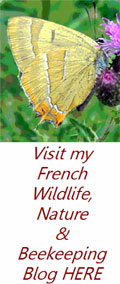Mediterranean pond turtle
Mauremys leprosa
Émyde lépreuse
The distribution area of
the Mediterranean Pond Turtle covers a large part of
They are a small turtle,
on average 15-16 cm for males and maximum 20 cm for females in

They are a very fierce
animal that is not always easy to observe, frequenting stagnant or
slow-moving water, streams, rivers, ditches, canals. They
tolerate a certain amount of organic contamination and can even be found in
industrial areas and water treatment plants.
Potentially they
hibernate from November to March, but this can vary throughout their range
and may not occur at all in
Lifespan in captivity is
about 25 years but unlikely to be anything near that in the wild.
Threats:
They suffer predation from various mammals or birds such as weasels, wild boar, badgers, otters, corvids, storks, eagle owls etc both at the egg stage and when juvenile.
Loss or degradation of habitat – ponds, pools and watercourses and surrounding terrain for egg laying and hibernation.
Traffic collisions.
Capture and removal by people wanting them as pets.




